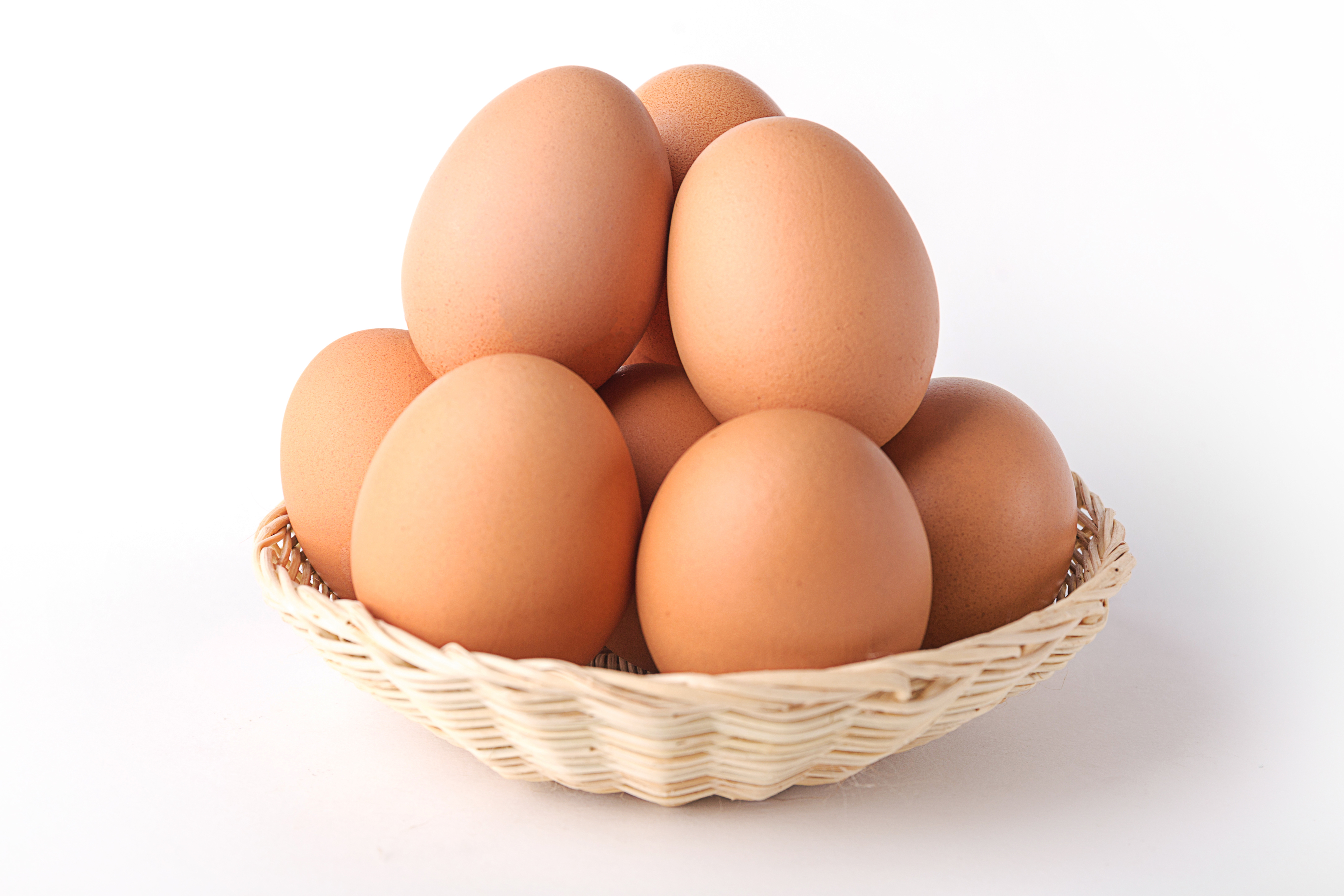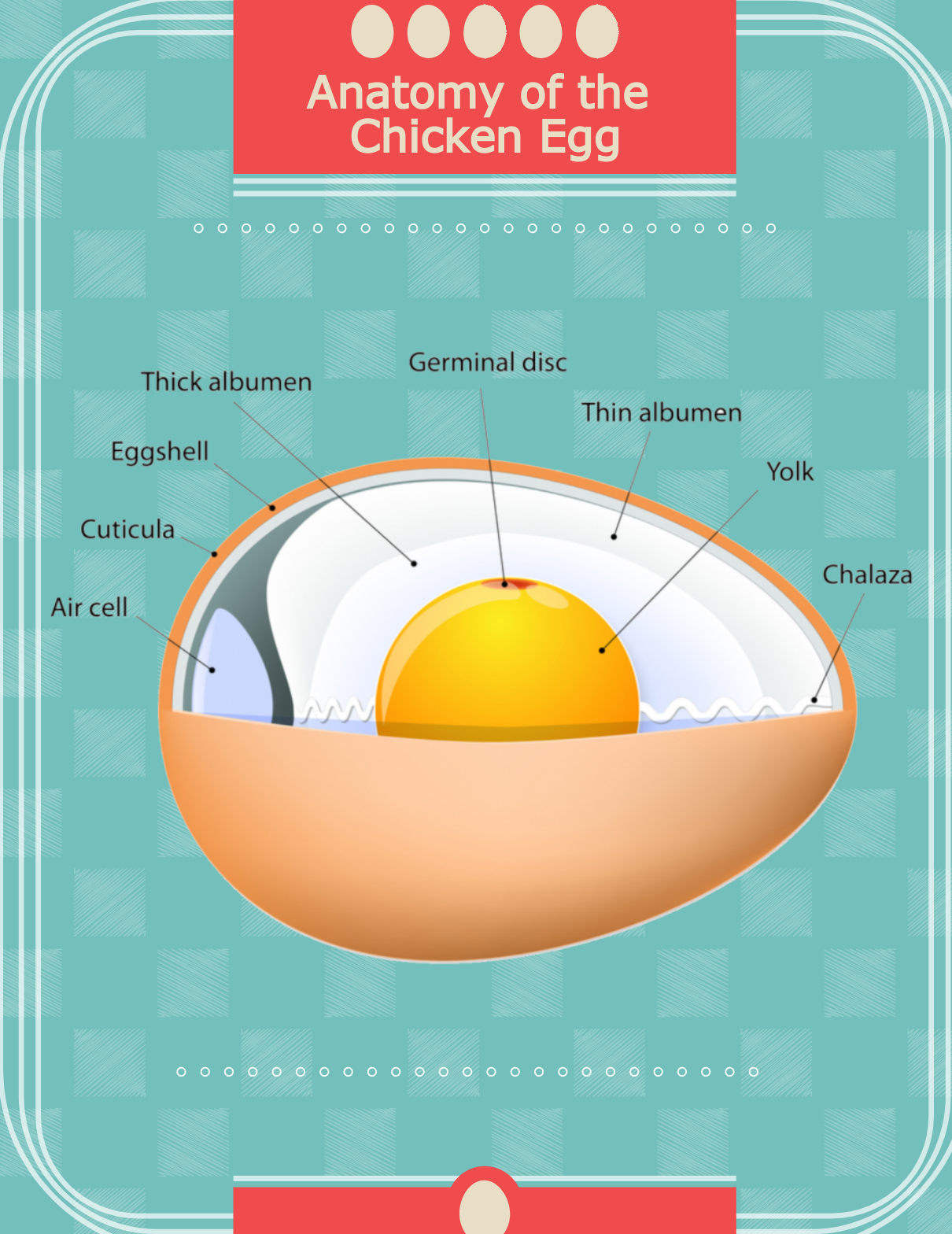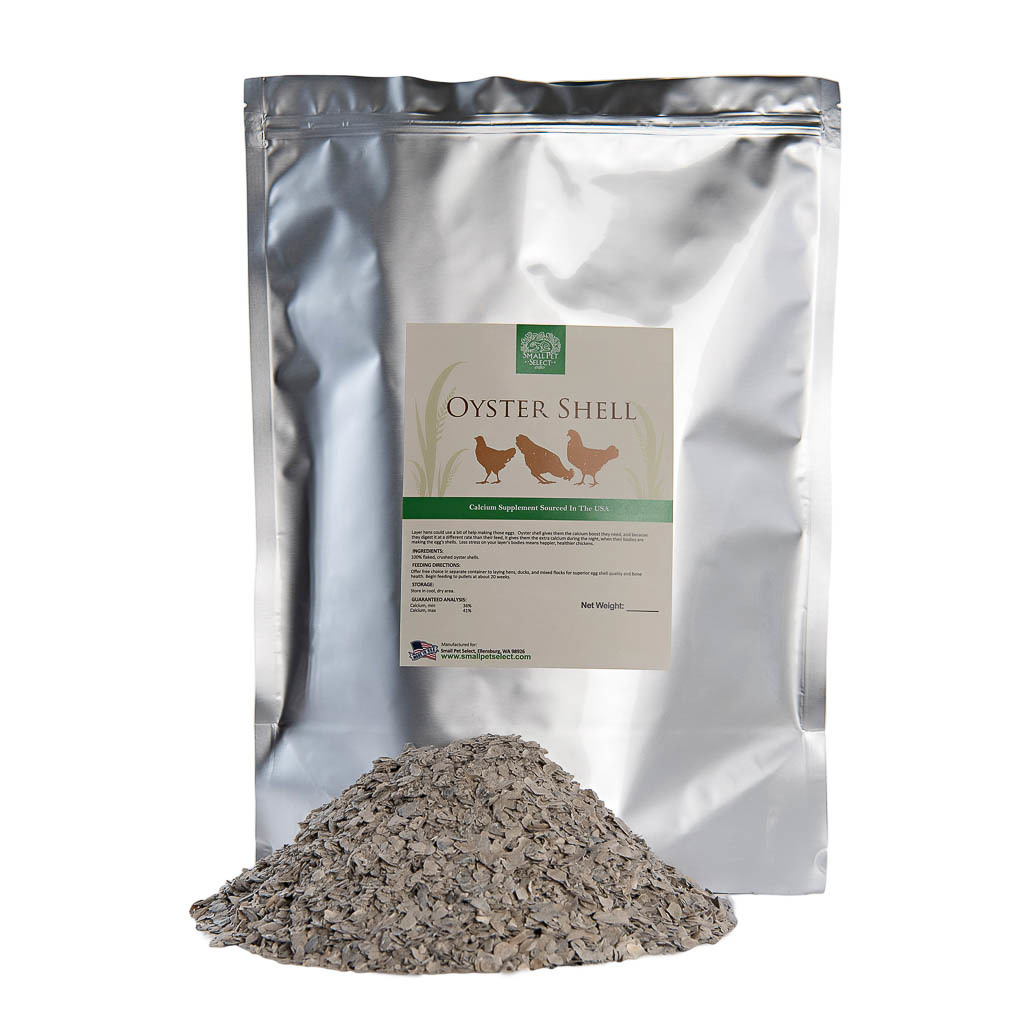How are eggs made inside the chicken? This is a question that many people ask, whether they have a few chickens at home or they simply love free-range eggs. As one of the most versatile foods, eggs take center stage in many dishes, from scrambled, boiled, and fried eggs to omelets and quiche. They're also used in baking and many food dishes across almost every culture in the world. While we all know a lot about the benefits, nutrients, uses, and properties of eggs, we don't always know how eggs are made. This process is pretty miraculous, not to mention fascinating.
Once a hen is mature, lighting conditions trigger the hormones that are needed to begin the egg-laying process. The egg starts as a yolk, which, in turn, originates as a super tiny ova. Once the ova is produced, several stages take place as the egg develops inside the hen. The ova slowly becomes a yolk, with the egg white and membrane then developing, along with the protective shell. For one egg to be created from start to end, it can take around 24 hours. Once this egg is laid, the process begins again and a new egg is created.
To give you an idea of the egg development cycle and explain the structure of the egg, we've put together a guide on how eggs are made in a chicken.
One of the best parts of being an urban chicken farmer is collecting your hens’ eggs at the end of the day. It’s no secret that backyard chickens lay the best eggs (I’m not biased…), but how are eggs made? Healthy eggs depend on the hen’s age, environment and feed. It’s quite a process and makes you really appreciate what your hens do for you almost each and every day.
Parts of the Egg
The egg consists of several parts. Each is created individually in different areas of the hen’s reproductive system.
- Chalaza. Chalaza is a thicker type of albumen that is twisted tightly, like a rope. Its job is the keep the yolk centered so it doesn’t stick to the shell itself.
- Shell membranes. The inner and outer shell membranes are super thin and protect the shell contents. The outer membrane is very thin and located just inside the shell. The inner one is located between the outer shell membrane and the albumen.
- Shell. This outer covering neatly packages everything in a protective layer.
The Creation Process
First of all, obviously, the egg is created from the inside out. The yolk is crafted, then surrounded by egg white, and finally it is all carefully bundled in a lovely shell.
The yolk starts as a teeny tiny ova. This is created inside the ovary of the hen. It can take up to one week for the ova to grow into a proper yolk. If you cut a yolk in half, you may notice darker and lighter rings. The dark rings indicate the layers that were created during the day when the hen was feeding and producing more fat, the light rings were created at night when the hen is at rest and producing more protein. Now that's a cool bit of trivia.
But back to egg creation. When the yolk is ready, is it released into the oviduct and picked up by the infundibulum. This is where fertilization can take place (if the flock includes a rooster). The yolk continues its journey to the magnum where it is covered in albumen. From here, it enters the isthmus that produces the chalaza and shell membranes. And, finally, onto the shell gland, where the developing egg spends most of its time in a process called calcification. The shell is made from calcium carbonate and is quite feat of engineering. Being only 0.3 mm thick, it is surprisingly strong. It travels down the oviduct small end first, but is laid large end first to prevent contamination from fecal matter. It takes a chicken roughly 24 hours to form an egg from a released yolk.
Eggs come in an array of sizes and pigments depending the breed of chicken. Sizes can vary slightly each day, but the color of the shell typically never changes.
Problems with Production
Nothing is perfect. Even your favorite hen can sometimes produce defective eggs. These can be caused by environment, age, illness, diet or just be a random fluke. Some common production problems are:
White Banded Egg:
If production gets too ambitious and two eggs enter the shell gland pouch at the same time, normal shell formation is disrupted and the first egg will get an extra boost of calcium, causing a white band to form on the shell. This can be caused by stress, changes in lighting or disease.
Blood on Shell:
I panicked when I first saw one, but it is usually nothing to be worried about. Blood on the outside of eggs can be caused by ruptured blood vessels from extensive straining – most common in young pullets or overweight hens (maybe time to lay off the midnight snacking). It can also indicate mites or lice around the vent which will need to be remedied. Sudden increase in light, such as supplementing light during winter months, may also trigger it.
Body Checked Egg:
Overcrowding can cause shells to be cracked during the calcification process. Just like with fractured bones, extra calcium is deposited over the crack to protect it which can sometimes form a ridge around a part of the otherwise smooth egg.
Calcium Deposits on Shell:
This lumps and bumps on the outside of shells can be caused by defective shell glands, stress in the flock, or excess calcium in the hen’s diet. These can cause injuries and ruptures during the laying process; therefore chicken parents should carefully moderate the hen’s diet. These can also happen in older hens (like mine) whose production is starting to decline.
Uneven Pigment on Shells:
Finding mottled eggs on decorated Easter eggs is just fine but finding one in your nest box can be surprising. Uneven pigmentation can be caused by nutrient deficiencies (especially magnesium), viral infections, parasites, stress, or extreme temperatures.
I once found an egg from Helga, my Ameraucana (also known as “easter-egger”), that was half green and half brown. I actually blew out the inside and made the shell into an interesting ornament. And then I changed her diet to accommodate more magnesium.
Rubber Eggs:
Also referred to as shell-less eggs, this is arguably the most disturbing production problem simply because it is so bizarre. A rubber egg is one that literally has been laid without a shell and consists of just the yolk, albumen and membrane. These break easily, of course, so often the only indication would be a mass of gooey straw in the nest box. These are caused by calcium deficiency, disease, high temperature, stress, parasites, laying while molting, or exposure to toxins such as bacteria or mold. Very young pullets will often lay rubber eggs simply because their egg gland have not fully matured.
Imagine reaching into the nest box expecting a solid egg, and instead grabbing what feels like a handful of jelly. Yikes!
Soft-Shelled Eggs:
Like rubber eggs, these are unnerving. They are eggs with an incomplete shell and sort of feel like water balloons (though I really don’t suggest throwing them at your significant other in jest; my husband did not find it at all amusing). These can be caused by premature egg laying due to stress, lack of calcium, immature egg gland, and high temperatures.
Gertrude, my 5 year old Orpington, has chronic calcium deficiency so I often find soft-shelled eggs in the nest box. When this happens, I bulk up on my girls’ free-feed oyster shell for a boost of calcium.
Misfires:
Actually, that’s just what I call them. Other names are rooster egg, oops egg, fairy egg… they are super tiny and do not contain yolks. This happens if a foreign mass enters the hen’s oviduct and triggers the formation of an egg. The mass (sometimes just a small piece of reproductive tissue) develops just like a normal egg but, since there is no yolk, it ends up being super tiny. It is also sometimes darker because it spends more time in the shell gland pouch.
I have found a couple of these in the nest box and they truly are fascinating. I even made a few fairy-sized omelets with them, just for fun.
Overall, egg production is a pretty incredible accomplishment. So much has to come together in such a short time for a healthy and normal egg to get laid on a daily basis. Give your feathered ladies an extra helping of grub bugs, they deserve it for all their hard work.
DISCLAIMER: The links and information are being provided as a convenience and for informational purposes only; they do not constitute an endorsement or an approval by Small Pet Select of any of the products, services or opinions of the corporation or organization or individual.
Interested in learning more about chickens? Check out these articles!
How to Tell if You Have a Hen or Rooster









